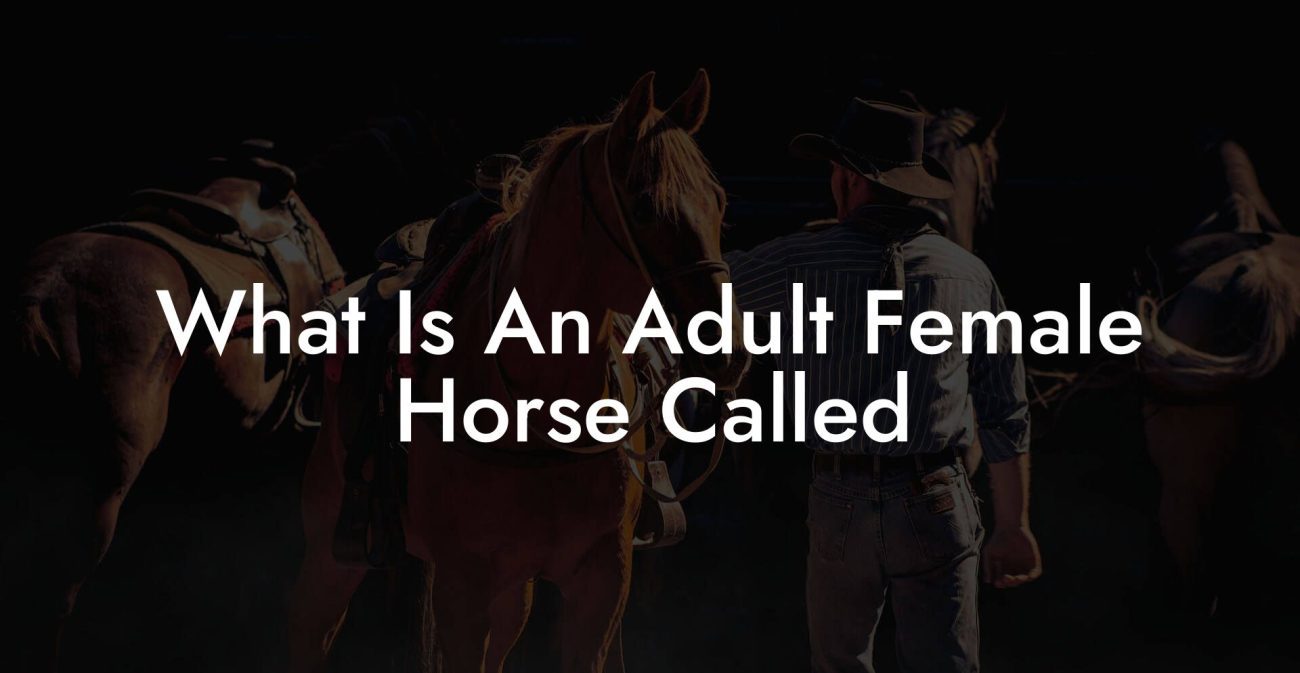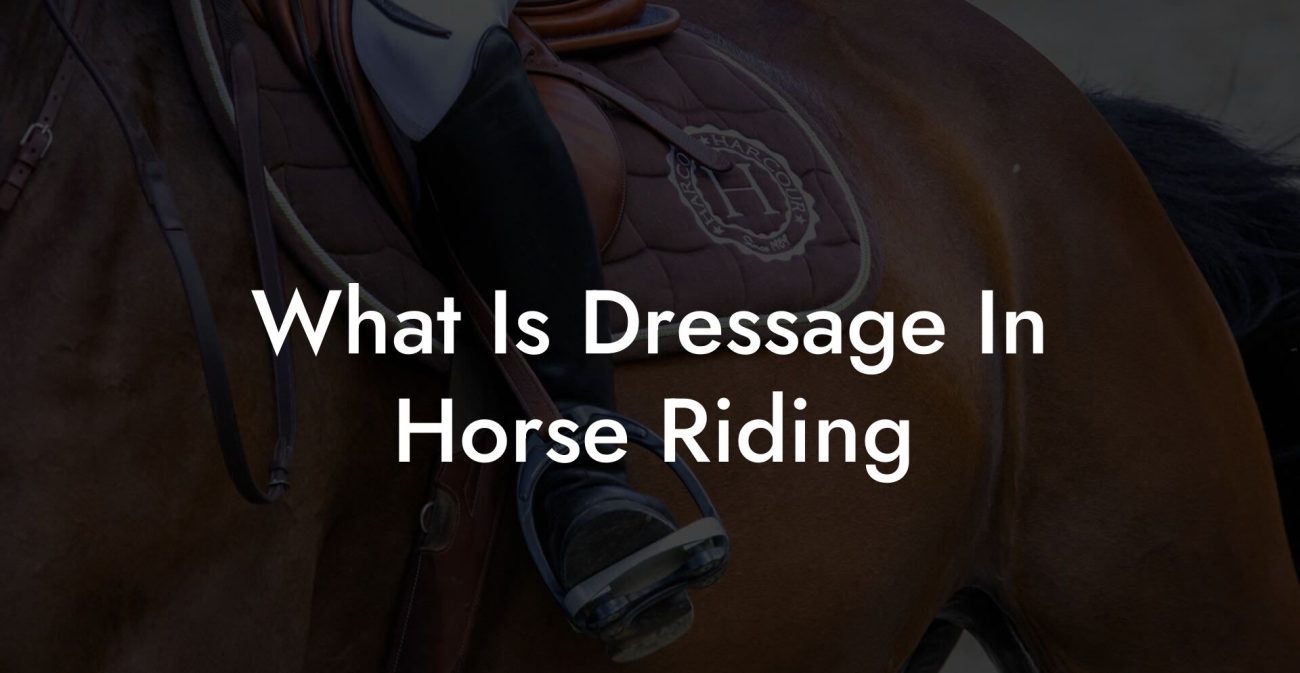Ever wondered why your horse wears a bit and what kind of magic it performs when they’re trotting down the trail? It might seem like a tiny piece of metal, but in the equine world, a well-chosen bit is the unsung hero that maintains balance, communication, and comfort for our four-legged friends. In this guide, we’re diving deep into the world of horse bits—what they do, why they’re essential, and how they revolutionize your horse care routine. Whether you’re a passionate equestrian enthusiast, a curious Gen-Z rider, or a millennial who’s just starting out on your horse care journey, this pillar page is your all-in-one resource to decode the mysteries behind the bit and strengthen your bond with your equine partner.
Quick Links to Useful Sections
- Understanding the Bit: What Does It Do For a Horse?
- The Anatomy of a Horse Bit
- Parts of a Bit
- The Evolution of Bit Design
- How Bits Work: Equine Communication Through Pressure
- Types of Bits and Their Effects on Horse Performance
- Snaffle Bits
- Curb Bits
- Hybrid and Specialized Bits
- Fitting and Adjusting Bits: Comfort Is King
- Common Misconceptions About Horse Bits
- Myth #1: All Bits Are Harmful
- Myth #2: A Bit Equals Dominance
- Myth #3: More Expensive Bits Are Always Better
- Myth #4: The Bit Is the Only Tool for Control
- Integrating Holistic Equine Care and Bit Use
- Real-Life Experiences: Case Studies in Bit and Horse Harmony
- Case Study 1: The Sensitive Sweetheart
- Case Study 2: Restoring Confidence in an Aging Stallion
- Case Study 3: The Tech-Savvy Rider’s Breakthrough
- Creating Your Personalized Bit Care and Training Plan
- Step 1: Comprehensive Assessment
- Step 2: Establish Clear Training Goals
- Step 3: Select the Right Bit
- Step 4: Develop a Consistent Routine
- Step 5: Monitor, Evaluate, and Adapt
- Frequently Asked Questions About Horse Bits
- Resources and Community Support: Your Next Steps
- Your Journey to Empowered, Holistic Horse Care
Understanding the Bit: What Does It Do For a Horse?
At its core, the bit is a fundamental piece of equestrian equipment designed to assist riders in communicating with and guiding their horses. Think of it as the translator between human subtle cues and the powerful language of a horse’s body. Far from being a tool for pure control or punishment, a well-fitted bit encourages a fluid dialogue—helping the horse understand when to slow down, speed up, or change direction.
The bit works by applying gentle pressure on the sensitive parts of a horse’s mouth, such as the tongue, bars, and sometimes the roof of the mouth. This pressure helps the horse realize that a change in behavior is needed, ensuring a ride that’s both safe and enjoyable. With the right bit, your horse can be coached into a graceful partner that confidently responds to your cues, making your riding experience both dynamic and harmonious.
It’s crucial, however, to understand that the bit is just one part of a much larger system of training and communication. Used correctly, it becomes an extension of you—a subtle yet effective tool that enhances the partnership between horse and rider.
The Anatomy of a Horse Bit
Before you start shopping for bits or experimenting with different styles, it’s important to familiarize yourself with the basic anatomy of a bit. Much like how a smartphone has various buttons and features that need to be understood, a horse bit also has its intricate components that work together to create a balanced experience.
Parts of a Bit
Let’s break down the primary parts:
- The Mouthpiece: This is the portion of the bit that sits directly in the horse’s mouth. It comes in various shapes and sizes, designed to distribute pressure evenly.
- The Shanks: Found primarily on curb bits, shanks extend from the mouthpiece and provide leverage for the rider’s hands, allowing for more refined control.
- The Rings: These are the loops that attach the bit to the bridle and reins. They vary in shape and material, contributing to the overall function and comfort of the bit.
- The Port: Seen on some bits, a port is a raised section on the mouthpiece that can help reduce tongue pressure while encouraging a certain head carriage.
Each of these components plays a critical role in not only how the bit feels for your horse but also how effectively it translates your commands. The design, shape, and material of each part can drastically alter the riding experience, making it important to keep your horse’s unique needs in mind.
The Evolution of Bit Design
Historically, bits have evolved from rudimentary pieces of metal to sophisticated designs reflecting advances in equine science and technology. From ancient civilizations using simple, hand-forged bits to today’s high-tech, ergonomically designed options, the evolution of bits is a testament to our growing understanding of horse behavior and anatomy. Modern bits come in a variety of materials such as stainless steel, copper, and even synthetic composites that prioritize comfort without compromising durability.
How Bits Work: Equine Communication Through Pressure
Imagine having a conversation where words are replaced by gentle nudges and subtle pressures. That’s essentially how a bit communicates with your horse—a series of cues delivered via carefully calibrated pressure points inside the mouth. When you pull on the reins, the bit exerts pressure, signaling your horse to slow down, turn, or adjust their stride. The key is consistency and precision, which means that every touch of the bit is a carefully orchestrated cue rather than an act of coercion.
For the bit to work effectively, it must be properly fitted and paired with a bridle that respects the horse’s natural movement. A loose, ill-fitted bit can lead to discomfort or miscommunication, undermining both trust and performance. On the other hand, a well-fitted bit becomes almost invisible in action—allowing your horse to focus on the task at hand without distraction.
When used transparently and gently, the bit fosters trust between the rider and the horse, creating a loop of positive reinforcement. The horse learns to interpret the pressure as a signal for guidance rather than as a punitive measure, ensuring that every ride is a shared, enjoyable experience.
Types of Bits and Their Effects on Horse Performance
Not all bits are created equal, and choosing the right one can significantly impact both your horse’s comfort and performance. From mild snaffles to leverage-inducing curb types, here’s a breakdown of common bits and what they’re best suited for:
Snaffle Bits
Snaffle bits are perhaps the most popular type for beginners and experienced riders alike. They function by applying direct pressure on the inside of the horse’s mouth without any additional leverage. This simplicity makes snaffles an excellent choice for everyday riding, as they encourage a relaxed, understanding communication style.
With their gentle action, snaffle bits are ideal for horses learning the ropes or those with sensitive mouths. The straightforward design means that riders can easily interpret their horse’s subtle cues, making them a favorite in disciplines like show jumping and trail riding.
Curb Bits
Curb bits are a bit more complex, incorporating shanks and leverage to amplify the pressure applied to the horse’s mouth. This design provides a higher level of control for more advanced maneuvers but requires careful handling. The curb bit’s leverage can translate even the smallest rider’s input into a noticeable cue, which is both a blessing and a challenge depending on the horse’s temperament.
Riders who opt for curb bits should be well-trained in using subtle rein movements, as excessive pressure can quickly overwhelm a sensitive equine palate. When used correctly, however, curb bits offer precision in performance disciplines and are especially popular in Western riding and high-level dressage.
Hybrid and Specialized Bits
Today’s equestrian market is brimming with hybrid bits that combine features from both snaffle and curb designs, aiming to offer the best of both worlds. These bits are engineered to provide comfort while delivering the nuanced control needed for complex maneuvers. Additionally, specialized bits crafted for therapeutic purposes can help ease dental issues, sore mouths, and other complications that might arise from extended periods of wear.
The key takeaway here is that the type of bit you choose should be tailored to your horse’s individual needs and your specific riding discipline. Experimenting with different bits under the guidance of a knowledgeable trainer can yield insights into which style fosters the most effective and comfortable communication.
Fitting and Adjusting Bits: Comfort Is King
Even the best-designed bit can become a source of discomfort if it isn’t properly fitted to your horse’s mouth. Bit fitting is as much an art as it is a science, requiring careful observation, regular adjustments, and a deep understanding of equine anatomy.
A well-fitted bit should:
- Distribute pressure evenly across the sensitive areas of the mouth.
- Allow for a natural jaw movement without causing pinching or excessive pressure.
- Accommodate your horse’s specific dental structure and palate shape.
- Work in harmony with your overall bridle setup to ensure balanced communication.
Regularly monitoring your horse’s response to a bit is essential. Look for signs of discomfort such as excessive drooling, head tossing, or resistance during maneuvers. Small adjustments can make a world of difference in ensuring that the bit is a communication tool rather than a cause for distress.
Equine care professionals often emphasize the importance of “bit check” sessions—periodic assessments where the horse’s mouth is examined for any signs of irritation or potential dental issues. These sessions are particularly critical for young horses whose mouths are still developing or older horses that may have accumulated dental wear. This proactive approach ensures that your horse’s riding experience remains both safe and enjoyable.
Common Misconceptions About Horse Bits
The topic of horse bits is often laced with myths and half-truths that can confuse even the most seasoned rider. Let’s set the record straight by debunking some of the most common misconceptions:
Myth #1: All Bits Are Harmful
Some believe that any bit, regardless of its design, forces horses into submission and causes unnecessary pain. In reality, a properly fitted and correctly used bit is an essential communication tool that, when balanced with gentleness and understanding, does not harm but rather guides and supports the horse.
Myth #2: A Bit Equals Dominance
The idea that using a bit is synonymous with enforcing dominance oversimplifies the relationship between rider and horse. In fact, effective horsemanship relies on mutual trust and respect. A bit, when used with a light touch and clear signals, fosters a partnership built on understanding rather than domination.
Myth #3: More Expensive Bits Are Always Better
While quality matters, the price of a bit does not automatically guarantee comfort or performance. The effectiveness of a bit lies in how well it suits your horse’s specific needs, not in its brand name or cost. It’s more important to match the bit to your horse’s mouth structure and riding style than to splurge on premium materials.
Myth #4: The Bit Is the Only Tool for Control
Believe it or not, a bit is merely one aspect of a comprehensive equine communication system. The rider’s seat, leg aids, and overall body language all play critical roles in guiding a horse. A harmonious combination of these elements leads to a balanced and effective ride.
Integrating Holistic Equine Care and Bit Use
As modern equestrians, we’re no strangers to holistic lifestyles—whether it’s through wellness routines, sustainable living, or mindfulness practices. So why not extend that philosophy to your horse care regimen? Integrating holistic approaches can transform the way you think about bit usage and overall equine training.
Holistic equine care goes beyond simply matching a bit to a horse’s mouth. It involves understanding the physical, psychological, and even nutritional needs of your horse. A holistic view considers your horse’s daily routine, environment, diet, and exercise patterns—all of which influence how a bit interacts with their mouth.
For instance, stress can exacerbate sensitivity in the mouth, leading to a negative reaction to a bit that is otherwise well-fitted. Techniques such as regular massage, mindfulness training for the rider, and a stress-free environment in the stable can harmonize the equine experience. Feed your horse a balanced, nutrient-rich diet to encourage healthy muscles and soft tissues, and ensure that your training sessions are conducted in a calm and patient manner.
Integrative strategies might include:
- Mental Well-Being: Incorporate routines that reduce anxiety for both you and your horse. This can include calm grooming sessions, time outdoors, and low-pressure riding exercises.
- Nutritional Care: A balanced diet rich in essential vitamins and minerals can improve your horse’s overall health, helping maintain the strength and flexibility of the jaw and mouth tissues.
- Consistent Training: Rather than pushing your horse into rapid changes, employ gradual training methods with positive reinforcement, ensuring that communication remains clear and stress-free.
- Regular Equipment Checks: Keep your bit and bridle in top shape with frequent cleaning and adjustments to prevent any irritation or discomfort.
By integrating these holistic practices with informed bit use, you create a nurturing environment that respects your horse as a living, feeling partner rather than merely a beast of burden. This comprehensive approach not only improves performance but also deepens the bond between you and your horse.
Real-Life Experiences: Case Studies in Bit and Horse Harmony
Sometimes, the best way to understand the transformative power of the right bit is through real-life examples. Meet a few equestrians who have experienced firsthand how a well-chosen bit, combined with holistic horse care, has improved performance, communication, and overall well-being.
Case Study 1: The Sensitive Sweetheart
Bella, a gentle mare with a sensitive mouth, was initially unresponsive to typical snaffle bits. Her rider, Alex, decided to experiment with a hybrid bit that combined the gentle pressure of a snaffle with a hint of curb leverage. Paired with a carefully curated training routine and additional attention to Bella’s diet and stress levels, the results were astounding: Bella became noticeably more responsive, her anxiety diminished, and her overall performance in dressage improved dramatically.
Case Study 2: Restoring Confidence in an Aging Stallion
Max, a seasoned stallion, had begun showing signs of discomfort and resistance during rides, partly due to wear and tear in his mouth. His rider, Jordan, worked with a professional fitter to select a bit that was not only better suited to Max’s changing dental structure but also integrated holistic care routines such as gentle jaw massages and a new regimen of nutrient-rich supplements. Over time, Max’s confidence returned, and he resumed his role as a reliable, spirited partner in competitive events.
Case Study 3: The Tech-Savvy Rider’s Breakthrough
In an era of smart technology, Casey, a millennial rider, incorporated digital monitoring tools into her training routine. By using video analysis and biofeedback devices during rides, she identified subtle issues in her bit fit and riding technique. With this data, she partnered with an equine specialist to fine-tune her bit choice and care methods. The combination of precision data and holistic adjustments led to a breakthrough in her horse, Luna’s, performance, making their partnership the talk of local equestrian events.
These stories highlight that with patience, informed choices, and a willingness to delve into holistic care, the perfect bit isn’t just a piece of equipment—it’s a pathway to forging a deeper, more intuitive connection with your horse.
Creating Your Personalized Bit Care and Training Plan
A one-size-fits-all approach simply doesn’t work in the world of equine care. Crafting a personalized plan is essential to ensuring that your bit serves as an effective communication tool rather than a source of discomfort. Here’s how you can build a plan that’s perfectly tailored to both you and your horse:
Step 1: Comprehensive Assessment
Begin with a full evaluation of your horse’s oral health and overall comfort. Consult with an equine dentist or a knowledgeable trainer who can assess dental structure, identify sensitivities, and recommend a bit that aligns with your horse’s needs. This assessment serves as the foundation for your entire plan.
Step 2: Establish Clear Training Goals
What do you hope to achieve with your bit training? Whether it’s improved responsiveness on the course, enhanced manners during trail rides, or simply a deeper connection, setting clear, realistic goals is key. Document your objectives and ensure that every modification in your training plan is geared toward these targets.
Step 3: Select the Right Bit
Using the knowledge gained from your assessment and training goals, choose a bit that best suits your horse. Consider factors such as your horse’s temperament, the discipline you practice, and any special needs like sensitivity or dental issues. Don’t hesitate to experiment with different types under professional guidance.
Step 4: Develop a Consistent Routine
Consistency is where the magic happens. Establish a daily or weekly routine that includes:
- Warm-up exercises that engage your horse without excessive pressure.
- Designated bit check sessions to ensure long-term comfort and proper fit.
- Incremental training sessions that gradually introduce more complex maneuvers as your horse adapts.
- Holistic practices such as grooming, massage, and stress-reducing activities to create a calming overall experience.
Step 5: Monitor, Evaluate, and Adapt
Keep a journal documenting how your horse responds to each session, noting any changes in behavior or comfort. Leverage digital tools like video recordings or mobile apps for equine care to track progress. Regularly reassess and adapt your plan in consultation with equine professionals to ensure that it continues to meet your horse’s evolving needs.
A bespoke bit care and training plan is a continuously evolving blueprint—a living document that evolves as your partnership deepens and your horse’s needs shift. Embrace this dynamic process and celebrate each small success along the way.
Frequently Asked Questions About Horse Bits
Here are some of the most frequently asked questions that many equestrians ask when it comes to understanding and caring for horse bits:
1. What exactly does a bit do for a horse?
The bit serves as a communication tool, delivering subtle cues through pressure in the horse’s mouth. It helps guide and direct the horse during riding without resorting to force or pain.
2. How do I know if my horse’s bit is properly fitted?
Signs of a proper fit include your horse having relaxed, responsive behavior during rides, absence of excessive drooling or head tossing, and a lack of visible irritation in the mouth. Regular bit checks by an equine professional are recommended.
3. Are there risks associated with using a bit?
When used improperly, bits can cause discomfort or even injury. That’s why proper fitting, gentle handling, and regular assessments are key to ensuring your horse’s well-being.
4. What’s the difference between a snaffle and a curb bit?
A snaffle bit operates on direct pressure with no leverage, making it more forgiving and gentle. A curb bit has shanks and uses leverage to amplify pressure, offering more control but requiring more finesse on the rider’s part.
5. Can I change bits if my horse seems uncomfortable?
Absolutely. Many horses benefit from trying different bits as they age or as their training evolves. Always consider professional advice before making changes to ensure that the new bit will suit your horse’s anatomy and sensitivity.
6. How do holistic care practices improve the effectiveness of a bit?
Holistic care addresses stress, nutrition, and overall wellness, which in turn contributes to a more relaxed and responsive horse. Reduced stress means less tension in the mouth, allowing the bit to function as an effective communication tool.
7. Is it necessary to use high-tech monitoring equipment for bit training?
While not necessary, technological tools like video analysis and biofeedback devices can be extremely useful for identifying subtle issues in bit fit and rider technique. They can help fine-tune your approach for better outcomes.
Resources and Community Support: Your Next Steps
Navigating the world of horse bits and equine care can feel overwhelming at first, but you’re not in this alone. There is a vibrant community of riders, trainers, veterinarians, and enthusiasts ready to share their knowledge, offer tips, and support you along your journey. From local riding clubs to online forums and social media groups, tapping into these networks can provide you with the insights needed to make informed decisions for your horse.
Consider joining communities where you can ask questions, share experiences, and stay updated on the latest advancements in equine technology and holistic care. Whether you need advice on bit fitting, training techniques, or even nutritional tips, a supportive network can be your trusted companion on the road to becoming a more effective and compassionate horse caregiver.
In addition to community support, there are plenty of resources available—books, online courses, webinars, and workshops—dedicated to equine care and riding techniques. Many of these resources are designed with a modern, engaging approach that resonates with Gen-Z and millennial audiences, blending traditional wisdom with cutting-edge insights.
Embark on your next steps with confidence by leveraging these resources and connecting with like-minded enthusiasts who share your passion for empowering horses and revolutionizing your riding experience.
Your Journey to Empowered, Holistic Horse Care
Embracing the bit as a crucial part of your horse care toolkit is about more than control—it’s about communication, trust, and partnership. When you take the time to truly understand what a bit does, honor its role, and integrate holistic care practices, you not only elevate your riding experience, but you also transform your horse’s well-being. Every well-fitted bit, every mindful training session, and every moment spent ensuring your horse is comfortable, contributes to a safe, respectful, and enriching relationship.
In a world where equine care is evolving with modern insights, you have the unique opportunity to blend traditional techniques with innovative, holistic approaches. Your journey is a continuous loop of learning, adapting, and growing alongside your horse—turning every ride into a meaningful dialogue of trust and mutual respect.
From the first gentle pressure of the bit to the shared moments of triumph on the trail or in the arena, your partnership with your horse is a living testament to the power of empathy, clarity, and thoughtful care. Embrace this journey with humor, passion, and an eagerness to explore every facet of what a bit can truly offer. Your horse’s comfort, performance, and overall well-being are a reflection of the love and attention you invest in every detail.
Step forward with confidence, knowing that armed with knowledge and a supportive community, your equine adventures will always be guided by a commitment to kindness, innovation, and effective communication. Here’s to a future where every ride is a celebration of the incredible connection between you and your horse!













